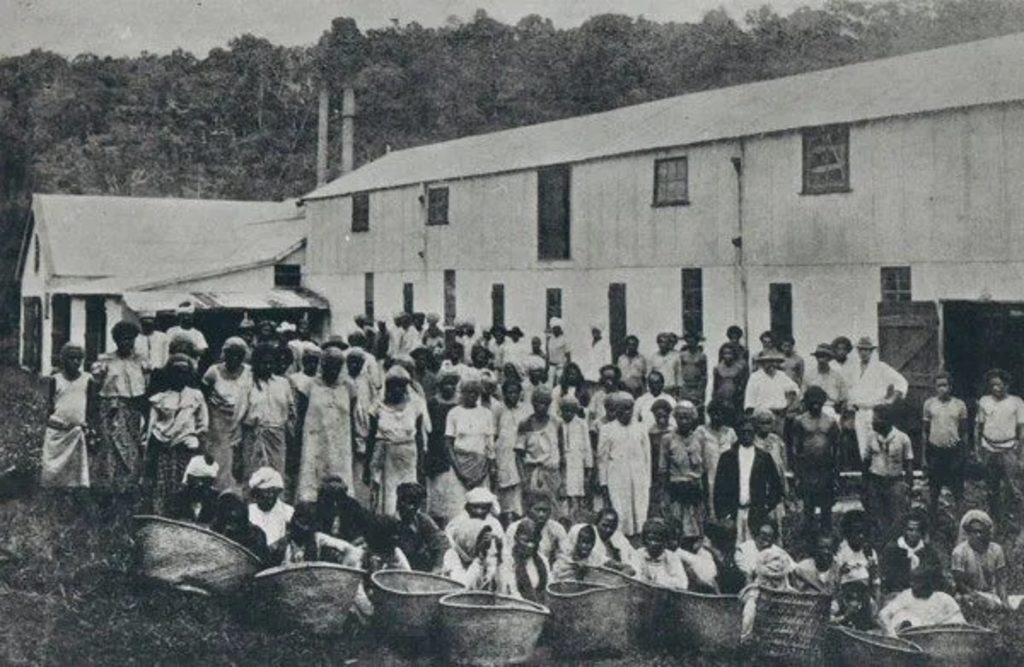During the colonial days, there was something called the ‘Fiji Blue Book’.
It was a directory of sorts, containing a list of all government appointments.
This week’s story is centred on a name entered in the Fiji Blue Book belonging to a female called Parbotti.
Her real name was Padam Kaur. She arrived in Fiji with her husband, Ram Chander, on June 27, 1885 in the vessel SS Ganges.
They were sent to work in Chalmers Estate in Rakiraki. According to Google searches, she later became the female warder at Suva Gaol from January 1, 1898 to 1901. She was paid a salary of 12 pounds a year.
Tragedy hit when Chander and his close associate, Bhanchand were blamed for a fire in June 1890, just a few weeks before his contract expired.
The Rakiraki blaze destroyed a small section of the sugarcane field and completely gutted the house of Sardar Mohammed.
Chander and Kaur were sleeping in their room when the fire started.
Chander and Bhanchand were arrested and taken to Ellington wharf a few days later and put on the boat Adi Rarongo.
Their trial was on July 18 and 19, 1890 and they were found guilty of arson and sentenced to 15 years of penal servitude, a few days before their indenture period was supposed to have ended.
While Chander was serving term Sardar Dost ‘directed his ire at’ Kaur and her cousin Narain who were back at the plantation.
A group of old friends made a plan to protect the two women ‘against any mischief’.
“The majority of other workers at the plantation, who had previously remained neutral, recognising the monstrous injustice, also became sympathetic to Padam Kaur and Narain,” Fiji – A Love Story noted.
“They kept a close eye to ensure that Padam Kaur was constantly protected. In addition they helped her complete the unfairly large task allotted to her each day by Dost Mohammed.”
The protection given to Kaur by a few friends who were concerned about her safety made Mohammed frustrated. He decided to bully Narain instead.
One day Narain was blamed for stealing a box but she was defended by workers at the plantation. As a result there was a lack of evidence and therefore charges against Narain were dropped.
Such defiance of the powerful Sardar was now possible because most of the labourers who had arrived together with Kaur her husband Chander on the SS Ganges had finished their labour contracts.
They were getting ready to leave the plantation and return home or find a new life in Fiji as free men. At the same time, a new lot of labourers had arrived in Fiji on May 17, 1890 aboard the ship, ‘Allanshaw’.
They were to replace those leaving the plantation, who would no longer ‘be at the mercy of’ Sardar Mohammed.
Again, another rumour emerged in the Penang plantation that Kaur’s ‘safety was at risk’ and that a conspiracy was ‘being hatched against her’.
Kaur had already decided that she would go to Suva once her indenture period was over and be closer to Chander who was imprisoned at the Suva Gaol.
Her friends advised her to leave for Suva immediately on completing her girmit contract. The exact date of her departure was kept a secret to prevent Mohammed from thwarting any plans of her travelling to Suva with her infant son (Bere).
During his time at the plantation, Chander was respected among the labourers. Now that he was in prison, he was replaced by a Badri Maharaj, a young 20-year-old ‘Garhwali who had just arrived in the ‘Allanshaw’.
Like Chander, Maharaj was a rare gem.
“He was literate, physically very strong and of kind disposition. These qualities made him a natural leader,” Fiji – A love story quoted.
Maharaj was an Indo-Fijian farmer, politician, and philanthropist. He was the first Indian member of the Legislative Council serving for two periods between 1916 and 1923 and 1926 to 1929
Through his own hard work he became a successful farmer. He was the first Fiji Indian to realise the need for schools for Indians and at his own expense founded the Wairuku Indian School, near Rakiraki, in 1898, making it the first Indo-Fijian school to be established in Fiji.
One of the famous Fijians to attend the school Ratu Sir Lala Sukuna.
A century after their indenture, Chander’s grandson, Bhagwan Singh and Maharaj’s son would form a very close relationship. Bhagwan and his son Ajay Singh, would both return to Fiji as Indian High Commissioners. Ajay Singh also worked as a sub-editor for The Fiji Times.
The latter would author the book Fiji: A Love Story (Memoirs of an Unconventional Diplomat)
This article was written based on the autobiography, Fiji: A Love Story (Memoirs of an Unconventional Diplomat) by Ajay Singh who was India’s High Commissioner to Fiji between 2005 and 2007 and a former sub-editor of The Fiji Times.
He was also an Indian politician and minister. Ram Chander and Padam Kaur (later Parbotti) were Singh’s great-grandparents. The book was completed posthumously by his close friend Professor Mahavir Singh. This article was first published in The Sunday Times on July 10, 2022.
To be continued next week.
Indentured labourers at a communal water pump. Picture: FIJI MUSEUM/Facebook

Labourers at a tea processing plant at Davutu, Wainunu, Bua, about 1905-1910. Picture: FIJI MUSEUM/Facebook



